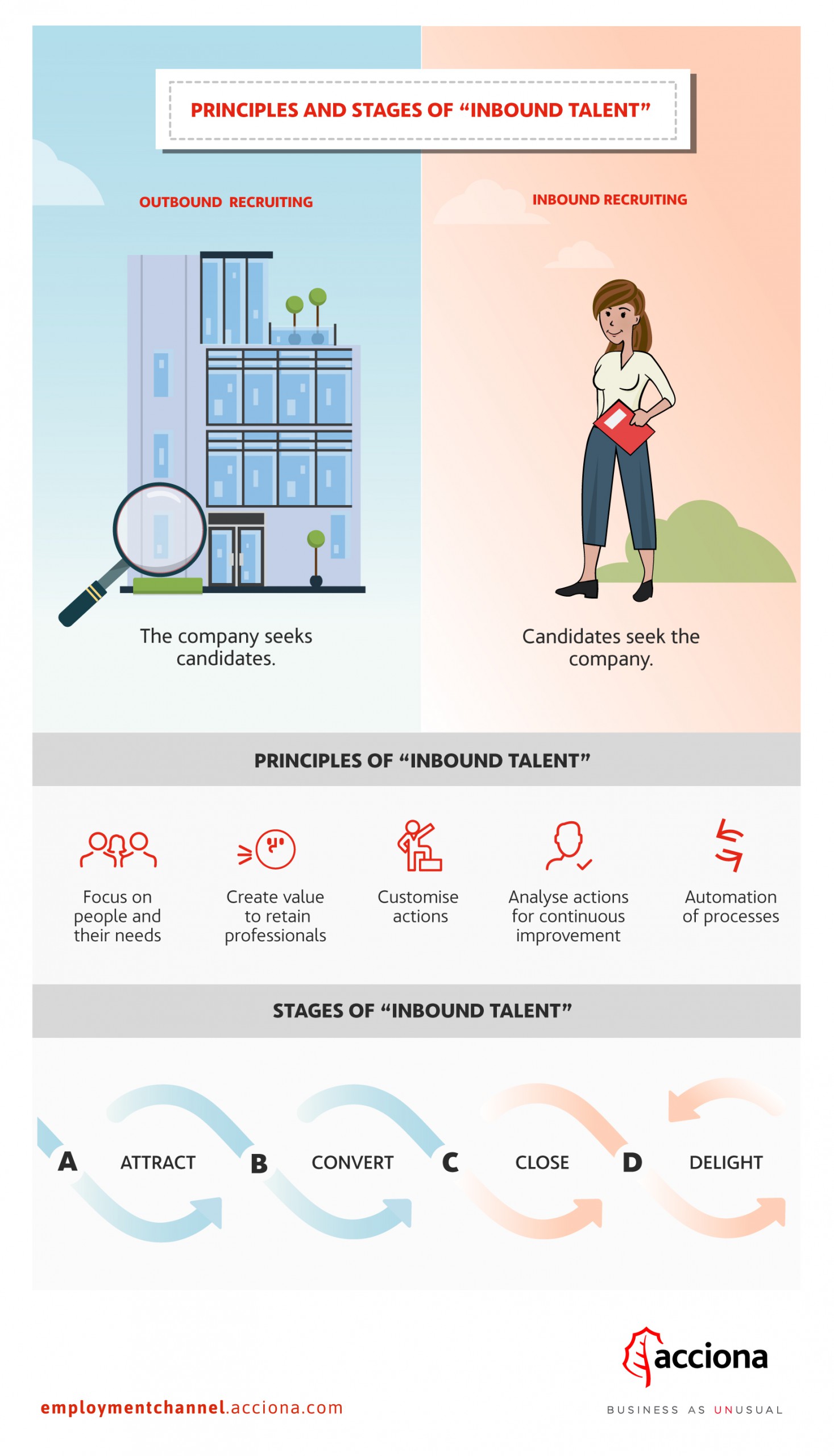When betting on Inbound Talent, a step beyond is taken once the most skilled professional is attracted. The next stage revolves around motivating him and making him feel valued so that he becomes an ambassador, therefore bringing in more talent eventually. Indeed, a happy employee is one of the keys to become a company best professionals want to work for. There’s an increasing number of sites, such as Glassdoor or Comparably, where employees can leave their impressions about the working environment within certain companies, and several criticisms might make talented professionals back out. A satisfied employee will speak naturally about the benefits of being hired by his company to other colleagues who will feel enticed and eager to be recruited.

There are five basic Inbound Talent principles to be taken into account:
1) It’s focused around the person and its needs. Every individual requirement must be taken into account, and try and satisfy them as they change, so that the employee feels being taken care of and wants to stay in the organization. Also, a low job rotation rate entails great savings for the company since, on average, the cost of a new recruitment is worth 40 days and around 4 000 dollars.
2) It creates value through a process designed to keep employees around, since it is estimated that a newcomer takes almost two years to reach the same level of productivity of a veteran.
3) It customizes actions, with the purpose of showing that every employee is important. It’s essential that the person is aware of the relevance of his duty in relation to achieving the goals set by the company, thus feeling motivated.
4) It’s important that the processes and tasks of Inbound Talent are automated. This way, it’s guaranteed that messages get to the right person at the right time.
5) Performance measurement regarding Inbound Talent actions is vital in order to achieve a continuous improvement process. At this point, measuring tools are necessary to carry out the task.
By implementing Inbound Talent policies, and through marketing strategies, the intention is to make employees act voluntarily and naturally as the best brand ambassadors available.
To achieve this goal, Inbound Talent goes through four stages:
The first one revolves around attracting the most capable. For that to happen, it’s essential to arouse their interest with appealing messages which show the company´s philosophy and the possibility to grow as professionals. The company website and social media are of great help to convey the message through employee-written blogs or videos showing corporate culture
In the second stage, it’s all about turning those candidates into productive employees by providing them with all the facilities required to perform their duties within a friendly working environment.
During the third stage, employee loyalty must be promoted. The best way to retain them is to keep their motivation high and meet their needs, both professional and personal.
The fourth stage requires to charm employees, to make them become brand ambassadors and recommenders, even if they’re no longer work for the organization.
The number of companies relying on Inbound Talent is increasing. Although accomplishing favorable results may take longer than with Outbound strategies, benefits are remarkable in the long run.
Sources: Glocal Thinking, The HR Tech Weekly and Forbes.